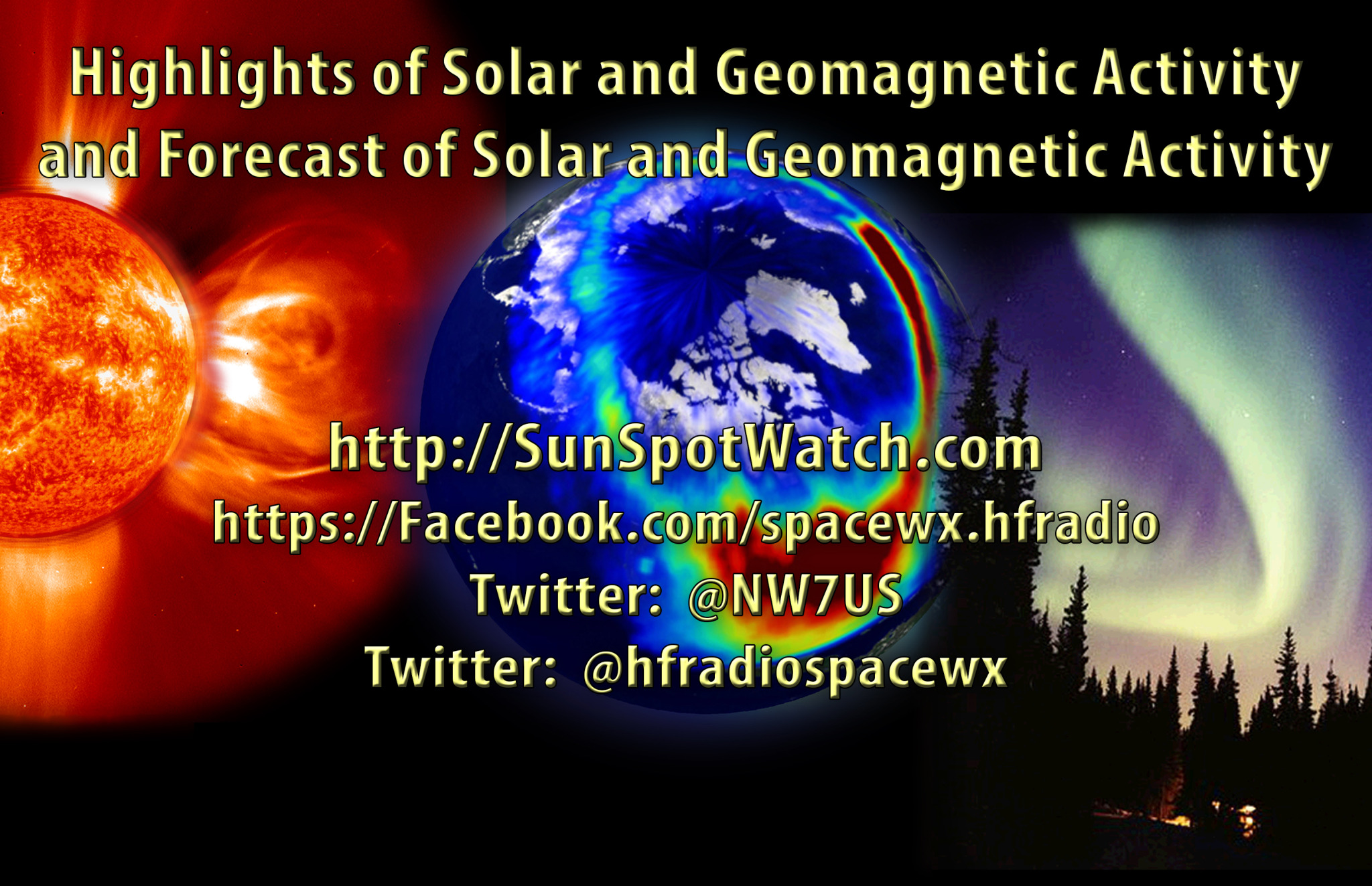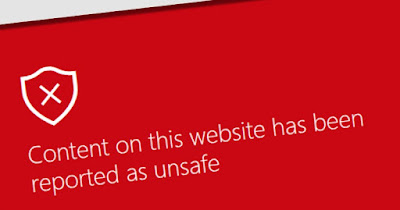 Ham Radio on a Budget, Stay at Home Projects and Whatever Happened to 10 Meters?
Ham Radio on a Budget, Stay at Home Projects and Whatever Happened to 10 Meters?
 Stories you’ll find in our June, 2020 issue:
Stories you’ll find in our June, 2020 issue:
Weather Satellite Image Reception: Part 2
By Cory GB Sickles WA3UVV
Among many radio enthusiasts, there is a certain fascination with being able to directly receive images from space—whether from polar orbiters in low earth orbit or geostationary satellites thousands of miles overhead. Years ago, a working weather satellite image downlink station required hard to find dedicated hardware that represented a serious investment. Today, such costs have dropped significantly and most of the items used can be easily purchased. Cory gives us a glimpse of this fascinating aspect of satellite monitoring.
Weather Watching and Radio: A Natural Fit
By Georg Wiessala
I think it is probably fair to say that most amateur radio operators and radio enthusiasts also have a healthy interest in the changing weather. Next to radios and accessories, weather stations are among the most popular radio shack accessories. In his own shack, Georg has long been the owner of the Davis Vantage Vue model, which sits on the roof and transmits to an indoor console. And, with his scanner, for local weather data and information; shortwave radio for weather facsimile and NAVTEX broadcasts and a receiver tuned to coded weather information on long wave, he has access to a wealth of valuable current weather data.
100 Years of Radio Series: Celebrating the Young Heroes of Early Wireless, and Beyond
By Richard Fisher KI6SN
You can always tell when a technology becomes a cultural phenomenon; it’s where all the young people want to be. There was no more interesting topic or career opportunity than radio in 1920. Richard takes a look at the popular literature of the time in books and magazines that feature “boy heroes” (and a few girl heroes, too) whose understanding of wireless technology saves the day.
Ham Radio on a Budget—Get great gear for less than you might expect!
By Robert Gulley K4PKM
Anyone who has priced the latest 160 through 6-meter HF rig might be put off by the “kilo-buck plus” price tag, especially if you are a licensee who has recently upgraded to General Class. Robert has good news for you—there are a great many such rigs on the used market that are excellent performers with modern features often at less than half the price of a brand-new model. He shows you which models to look for and why as well as what to look for in a reseller. This is also good news for shortwave listeners who want superior reception performance not found in portables.
TSM Reviews: Geochron Clock and Inrad W1 Amateur Radio Headphone/Mic
By Mark Haverstock K8MSH
Two great accessories for your shack that will add some joy and operating pleasure are under review this month: The Geochron Clock and Inrad W1 amateur radio headphone/boom mic. The Geochron Clock/World Map was once a high-ticket mechanical contraption, but today’s version is basically a small computer that displays a world map with call sign prefixes, greyline indicator and much more. Mark also tests the INRAD W1 amateur radio headphone/boom mic that features over-the-ear cushions and a long mic cord.
Scanning America
By Dan Veeneman
Changes are Coming to the 900 MHz Band
Federal Wavelengths
By Chris Parris
More Stay at Home Projects
MilCom
By Larry Van Horn N5FPW
Monitoring the Navy P-8A Maritime Surveillance Aircraft
Utility Planet
By Hugh Stegman
German Weather RTTY: A Blast from the Past
Shortwave Utility Logs
Compiled by Hugh Stegman Mike Chace-Ortiz
VHF and Above
By Joe Lynch N6CL
VHF and Above Contest Season Starts
Digitally Speaking
By Cory GB Sickles WA3UVV
Xenia Stayvention 2020
Amateur Radio Insights
By Kirk Kleinschmidt NT0Z
Six-Meter Minimalism
Radio 101
By Ken Reitz KS4ZR
Whatever Happened to 10 Meters; WorkTunes Revisited
The World of Shortwave Listening
By Andrew Yoder
Pirate Shortwave Broadcast During the Covid Pandemic
The Shortwave Listener
By Fred Waterer
WBCQ’s Big Broadcast of 2020; RNZI, RRI and BBC Programming Notes
Amateur Radio Satellites
By Keith Baker KB1SF/VA3KSF
Amateur Radio Satellite Primer (Part VI)
The Longwave Zone
By Kevin O’Hern Carey N2AFX
What’s your Longwave “Thing”?
Adventures in Radio Restoration
By Rich Post KB8TAD
A Tubeless Bargain: Hallicrafters S-40
The Spectrum Monitor is available in PDF format which can be read on any desktop, laptop, iPad®, Kindle® Fire, or other device capable of opening a PDF file. Annual subscription is $24. Individual monthly issues are available for $3 each.
Ken Reitz, KS4ZR, is publisher and managing editor of The Spectrum Monitor. Contact him at [email protected].
 The Future(s) of Amateur Radio
The Future(s) of Amateur Radio
The Sutton & Cheam Radio Society in England invited me to give a talk via Zoom recently. The topic was the future of amateur radio. As a Sociologist and Statistician, I’ve commented frequently both in this blog and on the ICQ Podcast about how to “future” on a given topic. Social change is challenging to forecast in specific terms. But more importantly, knowledge of how to “future” can lead to changes in organizational aspects of the social fabric that gave rise to the present. A mouthful? Yes, but so is “The magnitude of the complex impedance is the ratio of the voltage amplitude to the current amplitude; The phase of the complex impedance is the phase shift by which the current lags the voltage.” (Source) And, we hams can follow that, right?
The ICQ Podcast decided to use the audio portion of that talk as the feature in Episode 326. The disadvantage that podcast listeners face is not having access to the slides that the Sutton & Cheam Society members were viewing as I spoke. I’ve included them here for those who wish to more fully follow my talk. A video of 10 seconds per slide is below. The future is for amateurs to help make. Your ham radio associations are a vital element of which “future” you choose to help make for there are many futures available!
This talk will be revised into a written version, launching a column on my companion website, foxmikehotel.com, under the Social Circuits tab. Understanding amateur radio must be approached for what it is, an organized social behavior focusing on the use of specific radio technologies. This periodic Social Circuits column will examine amateur radio as such.
Frank Howell, K4FMH, is a regular contributor to AmateurRadio.com and writes from Mississippi, USA. Contact him at [email protected].
 LHS Episode #350: Another Ones Bites the Dust
LHS Episode #350: Another Ones Bites the Dust

Come in, come in! You're here for the 350th installment of Linux in the Ham Shack. In this short-format show, we talk about the cancellation of yet another big hamfest, a new organization for amateur radio on the ISS, the demise of a well-known SDR platform, Space-X, Creative Commons music, security apps for mobile devices and much more. Thank you for listening and have an excellent week.
73 de The LHS Crew
Russ Woodman, K5TUX, co-hosts the Linux in the Ham Shack podcast which is available for download in both MP3 and OGG audio format. Contact him at [email protected].
 QSO from the Pemi – Perfect Day
QSO from the Pemi – Perfect Day
Some days are too perfect to pass up. Today was one of those. I took a quick afternoon bike ride along the Pemigewasset River and worked WA1ASU in Virginia.
It’s a gorgeous sunny day… about 72F. There’s enough breeze to keep the mosquitoes away. Late in the afternoon I took my bike down to the trail along the river. I rode north for about 20 minutes. I stopped at a sharp corner underneath a giant pine tree. It’s just in front of my bike pictured below. The tree must be 100 feet tall.
I tossed a line about 45 feet over a branch. I pulled up my wire and sat on the ground at the edge of the trail with the KX3 in front of me. It didn’t take long to find Hank, WA1ASU calling CQ on 20 meters. He was strong and answered me right away from Virginia. We chatted for almost 15 minutes while I took in the beautiful river view.
Hank was running 50 watts to a Kenwood rig. “Your KX3 is doing a FB job,” he sent before we closed.
It’s so great to get out and enjoy the beautiful spring weather. A quick QRP contact makes the day perfect.
Jim Cluett, W1PID, is a regular contributor to AmateurRadio.com and writes from New Hampshire, USA. Contact him at [email protected].
 Weekly Propagation Summary – 2020 Jun 08 16:10 UTC
Weekly Propagation Summary – 2020 Jun 08 16:10 UTC
Here is this week’s space weather and geophysical report, issued 2020 Jun 08 0136 UTC.
Highlights of Solar and Geomagnetic Activity 01 – 07 June 2020
Solar activity was at very low levels with numerous B-class flares observed from new Region 2765 (S24, L=116, class/area Cao/130 on 05 Jun). This reverse polarity region was mostly stable since it rotated onto the disk on 03 Jun. No Earth-directed CMEs were observed during the period.
No proton events were observed at geosynchronous orbit.
The greater than 2 MeV electron flux at geosynchronous orbit was at normal to moderate levels through the period.
Geomagnetic field activity was at mostly quiet levels, with some isolated unsettled periods late on 01 Jun through early 02 Jun. A nominal solar wind environment was prevalent with wind speeds ranging from 300-400 km/s, total field (Bt) 5 nT or less and the Bz component mostly neutral.
Solar wind parameters became enhanced after midday on 07 Jun. Wind speeds increased to near 475 km/s, Bt reached a maximum of 13 nT and Bz reached a maximum southward extent of -8 nT. A suspected weak, positive polarity CH HSS resulted in this enhanced wind environment. The geomagnetic field reacted with unsettled to active conditions the last half of 07 Jun.
Forecast of Solar and Geomagnetic Activity 08 June – 04 July 2020
Solar activity is expected to be at mostly very low levels. A slight chance of low level activity exists through 15 Jun while Region 2765 remains on the visible disk. Very low levels will then persist through 28 Jun. Old Region 2765 (S24, L=116) is expected to return after 28 Jun with a possible increase in low level flare activity to a slight chance.
No proton events are expected at geosynchronous orbit.
The greater than 2 MeV electron flux at geosynchronous orbit is expected to be at normal to moderate levels through the outlook period.
Geomagnetic field activity is expected to be at unsettled to isolated active levels on 08 Jun due to influence from a weak, positive polarity CH HSS. From 09 Jun to 04 Jul, mostly quiet levels are anticipated.
Don’t forget to visit our live space weather and radio propagation web site, at: http://SunSpotWatch.com/
Live Aurora mapping is at http://aurora.sunspotwatch.com/
If you are on Twitter, please follow these two users: 1. https://Twitter.com/NW7US 2. https://Twitter.com/hfradiospacewx
– – – – – – – – – – – – –
Be sure to subscribe to our space weather and propagation email group, on Groups.io
https://groups.io/g/propagation-and-space-weather
Spread the word!
– – – – – – – – – – – – –
Links of interest:
+ Amazon space weather books: http://g.nw7us.us/fbssw-aSWSC
+ https://Twitter.com/NW7US
+ https://Twitter.com/hfradiospacewx
Space Weather and Ham Radio YouTube Channel News:
I am working on launching a YouTube channel overhaul, that includes series of videos about space weather, radio signal propagation, and more.
Additionally, I am working on improving the educational efforts via the email, Facebook, YouTube, Tumblr, and other activities.
You can help!
Please consider becoming a Patron of these space weather and radio communications services, beginning with the YouTube channel:
https://www.patreon.com/NW7US
The YouTube channel:
https://YouTube.com/NW7US
..
Visit, subscribe: NW7US Radio Communications and Propagation YouTube Channel
 Sundayday’s of learning was interrupted
Sundayday’s of learning was interrupted
Mike Weir, VE9KK, is a regular contributor to AmateurRadio.com and writes from New Brunswick, Canada. Contact him at [email protected].
 ICQ Podcast Episode 326 – The Futures of Ham Radio
ICQ Podcast Episode 326 – The Futures of Ham Radio
In this episode, Martin M1MRB is joined by Chris Howard M0TCH, Martin Rothwell M0SGL, Ed Durrant DD5LP, Frank Howell K4FMH and Bill Barnes WC3B to discuss the latest Amateur / Ham Radio news. Colin M6BOY rounds up the news in brief and this episode’s feature is The Futures of Ham Radio.
ICQ AMATEUR/HAM RADIO PODCAST DONORS
We would like to thank Kevin Strishock (N3KA), Michael Street (G3JKX), Lizzy Cannon (G0MDL) and Billy Kemp and our monthly and annual subscription donors for keeping the podcast advert free. To donate, please visit - http://www.icqpodcast.com/donate
- Record Numbers to take UK Foundation Exam - Ham Radio Operators still Transmitting - FT8 Used for Moonbounce (EME) Contact - AO-27 Returns from the Dead - Next Ham Heading to Space Station after Historic Launch - ARISS Establishes Itself as an Independent Organization - APRS Payload Balloons to Race Across North America in Educational Challenge - GQRP Club Online
Colin Butler, M6BOY, is the host of the ICQ Podcast, a weekly radio show about Amateur Radio. Contact him at [email protected].


















